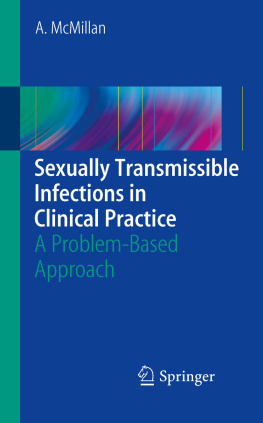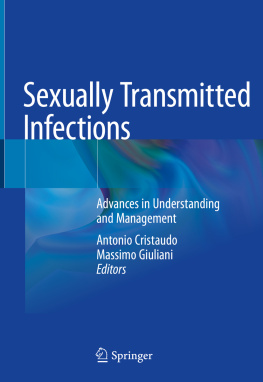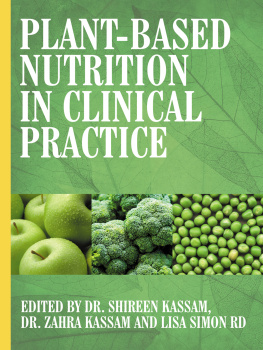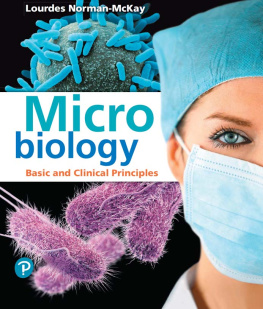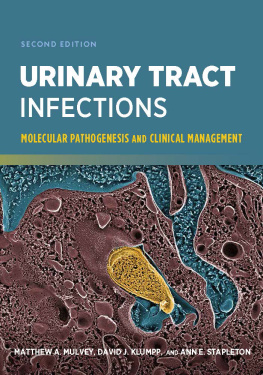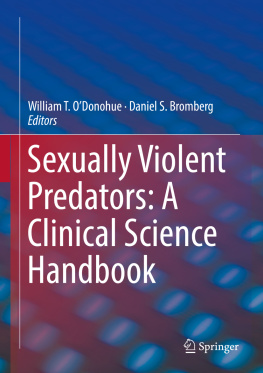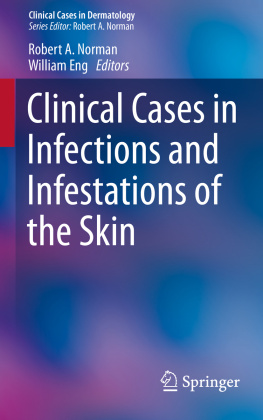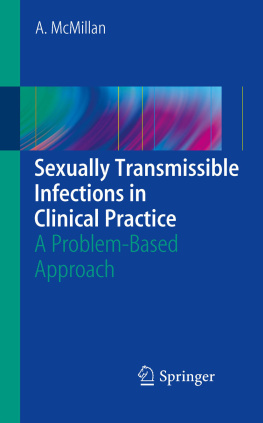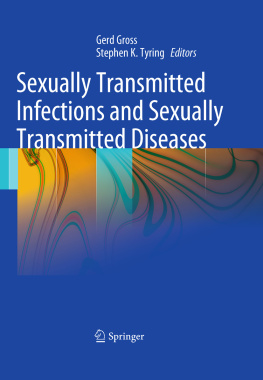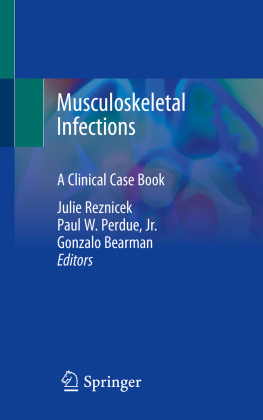McMillan - Sexually Transmissible Infections in Clinical Practice a problem-based approach
Here you can read online McMillan - Sexually Transmissible Infections in Clinical Practice a problem-based approach full text of the book (entire story) in english for free. Download pdf and epub, get meaning, cover and reviews about this ebook. City: London, year: 2010, publisher: Springer-Verlag London, genre: Home and family. Description of the work, (preface) as well as reviews are available. Best literature library LitArk.com created for fans of good reading and offers a wide selection of genres:
Romance novel
Science fiction
Adventure
Detective
Science
History
Home and family
Prose
Art
Politics
Computer
Non-fiction
Religion
Business
Children
Humor
Choose a favorite category and find really read worthwhile books. Enjoy immersion in the world of imagination, feel the emotions of the characters or learn something new for yourself, make an fascinating discovery.
- Book:Sexually Transmissible Infections in Clinical Practice a problem-based approach
- Author:
- Publisher:Springer-Verlag London
- Genre:
- Year:2010
- City:London
- Rating:4 / 5
- Favourites:Add to favourites
- Your mark:
- 80
- 1
- 2
- 3
- 4
- 5
Sexually Transmissible Infections in Clinical Practice a problem-based approach: summary, description and annotation
We offer to read an annotation, description, summary or preface (depends on what the author of the book "Sexually Transmissible Infections in Clinical Practice a problem-based approach" wrote himself). If you haven't found the necessary information about the book — write in the comments, we will try to find it.
Sexually Transmissible Infections in Clinical Practice a problem-based approach — read online for free the complete book (whole text) full work
Below is the text of the book, divided by pages. System saving the place of the last page read, allows you to conveniently read the book "Sexually Transmissible Infections in Clinical Practice a problem-based approach" online for free, without having to search again every time where you left off. Put a bookmark, and you can go to the page where you finished reading at any time.
Font size:
Interval:
Bookmark:
SECTION - A
- Has he had discomfort on passing urine?
- If so, consider urethritis.
- Has he noticed growths on the genitalia?
- If so, consider genital warts, molluscum contagiosum, or normal anatomical variants, such as coronal papillae.
- Has he had an itch in the skin of the pubic area, genitocrural folds, shaft of the penis, scrotum, buttocks, or perianal region?
- If so, consider phthiriasis and scabies, in addition to non-STI causes such as tinea cruris.
- Has he noticed swollen lymph glands in the groin (Fig. ) or elsewhere in his body?
- For example, painless inguinal lymph node enlargement may be a feature of primary syphilis and generalized lymphadenopathy may be associated with secondary syphilis or HIV infection.
- Has he had testicular pain or discomfort? Some men with urethral chlamydial infection complain of testicular discomfort in the absence of frank epididymo-orchitis.

- The date of his most recent sexual contact, and, if penetrative sex had been performed, were condoms used? (Remember the pre-patent periods of the STIs, e.g., gonococcal urethritis between 1 and 10 days and chlamydial urethritis 721 days. Note : Testing for STIs in the symptomless patient is generally deferred until 710 days after the most recent sexual risk.)
- Does he have a regular sexual partner, and, if so, for how long have they been in the relationship, and when did he last have sex with his partner? (Remember that one persons definition of regular may differ significantly from that of another!)
- If he has had sexual contact within the preceding 3 months:
- How many different partners has he had?
- What were the approximate dates of these sexual contacts? Again this is a relevant question with respect to the pre-patent periods of the infections.
- What was the gender of these partners? Remember that a sizeable proportion of men who are predominantly heterosexual have had homosexual contact. If he has had homosexual contact, it is helpful to enquire about what sexual activities had occurred (see ). This will inform on possible risks of infection with, for example, HIV and syphilis.
- How many lifetime sexual partners has he had:
- What was the gender of his partners?
- Has he always used condoms for vaginal, anal, or oralgenital sex? Consistent use of condoms reduces the risk of infection with some, but not all, STIs. Examples of the former include gonorrhoea, chlamydia, and syphilis, and an example of the latter, human papillomavirus.
- What was the country (countries) of origin of his sexual partner(s)? This is particularly important when considering the risk of infection with HIV, hepatitis B virus, and syphilis, conditions that are more prevalent in geographical areas outwith Western Europe, Australasia, and the United States of America.
- Has he had any STI in the past, and if so what, and when? This history is particularly important in the interpretation of positive serological tests for syphilis (see ).
- Has he ever been tested for HIV, and if so when, and what was the result?
- Has he or any of his sexual partners ever injected recreational drugs? If so, it is important to note when that (these) risk(s) occurred because of the often long pre-patent period before serological tests for the blood-borne viruses become positive.
- Has he had any serious medical conditions in the past, and what is the current state of his general health?
- Is he currently receiving medication, and if so what? This is important to know because of possible drug interactions with any drugs used for the treatment of STIs.
- Has he taken any antimicrobial drugs within the preceding month? Such therapy may have inadvertently treated an STI.
- Has he ever had a hypersensitivity reaction to drugs, particularly to antimicrobial agents?
Font size:
Interval:
Bookmark:
Similar books «Sexually Transmissible Infections in Clinical Practice a problem-based approach»
Look at similar books to Sexually Transmissible Infections in Clinical Practice a problem-based approach. We have selected literature similar in name and meaning in the hope of providing readers with more options to find new, interesting, not yet read works.
Discussion, reviews of the book Sexually Transmissible Infections in Clinical Practice a problem-based approach and just readers' own opinions. Leave your comments, write what you think about the work, its meaning or the main characters. Specify what exactly you liked and what you didn't like, and why you think so.

